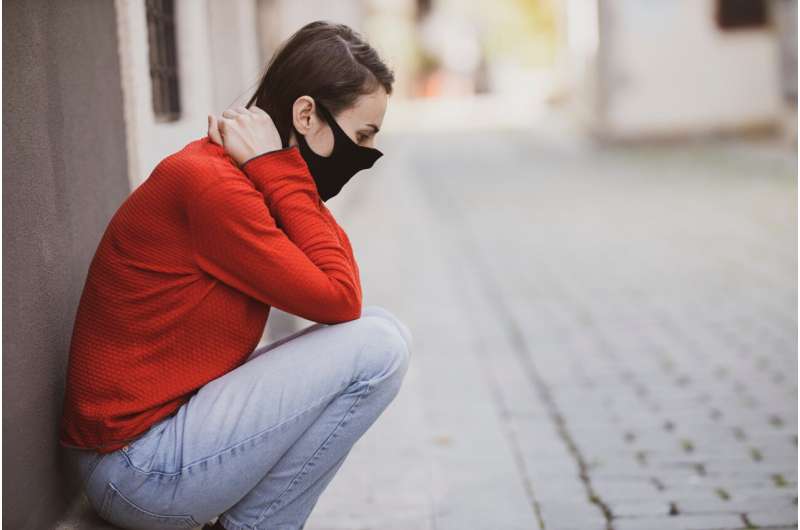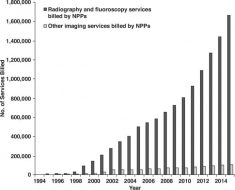
Hundreds of millions of people have had COVID, leaving many with an array of lingering symptoms known as long COVID. Awareness of long COVID has increased, allowing clinicians to refine their approach to diagnosing and treating patients. However, researchers are still looking for a more standardized definition of long COVID—and for clues to help predict who will develop it and how long it may take to recover.
To get the latest on long COVID, we spoke with Columbia experts Lawrence Purpura, MD, MPH, infectious diseases specialist, and primary care physician Sarah Ryan, MD. Purpura has established a study of COVID patients to look for factors that raise the risk of developing long COVID, as well as ways to more easily diagnose long COVID, and was recently awarded an NIH grant to study neurologic symptoms of long COVID. He also formed a clinic for patients with severe manifestations of the syndrome. Ryan has been caring for long COVID patients since the first months of the pandemic and participated in an expert clinical care panel on long COVID assembled by New York state’s Department of Health.
What types of symptoms are you seeing? Is long COVID similar to other post-viral syndromes?
Sarah Ryan: The most common symptoms are shortness of breath on exertion, decreased exercise capacity, feeling more tired. Recently, I had a patient with an ongoing, lingering cough. Another big one is executive dysfunction, or what people call brain fog. These symptoms also occur with other post-viral syndromes.
We have also learned that COVID virus can lead to nerve damage that alters the sense of smell and taste, and some people will have nonspecific neurological disturbances, such as tingling or discomfort.
Lawrence Purpura: In my clinic, we see patients with a variety of neurologic problems such as ringing in the ears, numbness and tingling in the hands and feet, problems with concentration and memory, and chronic fatigue, as well as increased heart rate and lightheadedness due to changes in body position, similar to the known phenomenon called POTS (postural orthostatic tachycardia syndrome). There’s a whole other type of long COVID that involves the heart and lungs, likely due to the fact that they had severe illness impacting the lungs and heart during the acute infection.
It is not entirely surprising that we’re seeing long-term symptoms after COVID. After recovery from Ebola virus, it’s very common to have chronic fatigue, as well as chronic joint and muscle pain. We’re seeing both of those symptoms with long COVID. And it’s very common to have weeks or months of fatigue after infection with Epstein-Barr virus, or “mono.” We also see similar things happen after HIV infection, influenza, and other viral infections.
How has long COVID changed over the past two years?
SR: When COVID first started, a lot of people were hospitalized for COVID pneumonia. Many were on a ventilator for a long time. So perhaps the severity of the illness and duration of the hospital stay contributed to their long COVID. It’s hard to know whether symptoms like muscle and respiratory deconditioning were due to hospitalization or COVID.
My first long COVID patient had symptoms that waxed and waned for more than six months. She went from being a high-functioning person to someone who could no longer work. Since then, my long COVID patients are not as debilitated.
LP: Fortunately, we’re seeing less severe long COVID in the past several months. There are a few reasons contributing to this. First, it’s been shown that vaccination can help prevent long COVID. I also suspect that the new omicron variants have mutated to the point where they’re acting very different than the original virus and the delta variant. The omicron variants are mostly causing upper respiratory infections, so we’re seeing fewer pulmonary complications and also fewer neurocognitive issues and other symptoms, such as increased heart rate, lightheadedness, and chronic fatigue.
How many people develop long COVID after their initial infection?
LP: This is a tricky question to answer. It depends on how long COVID is defined. A lot of research studies use the criteria of having at least one symptom for more than 12 weeks after the acute infection. This definition is very broad and includes a lot of people who only report very mild symptoms such as mild fatigue or chronic nasal congestion. Studies that use a liberal definition report that between 20% and 80% of COVID patients develop long COVID, but those studies probably overestimate how many people have moderate to severe long COVID. Furthermore, many long COVID symptoms are commonly caused by other chronic conditions so it is important to confirm that they are actually due to COVID infection.
In reality, I think the burden of moderate to severe long COVID is much lower, along the lines of 1% to 5%. In our study with Columbia colleagues Michael Yin, Anne-Catrin Uhlemann, and David Ho, we find that at 12 weeks around 25% of COVID patients with lingering symptoms reported fatigue, 25% reported insomnia, and around 20% reported increased heart rate or dizziness, but only 15% reported neurocognitive deficits like difficulty with short-term memory. It is also important to note that the severity of these symptoms ranges from very mild to severely disabling.
Do we know what causes long COVID?
LP: There are several hypotheses about what causes long COVID. It’s thought that the initial COVID infection triggers an inflammatory cascade that produces lingering symptoms. We are looking for biological indicators, like autoantibodies, immune markers, or specific proteins in the blood that could be used to screen for long COVID and potentially monitor treatment and recovery over time.
We are also investigating the possibility of viral persistence. Most people clear the virus from their respiratory tract quite quickly, and the virus is usually undetectable by PCR testing after a few weeks. However, it is theoretically possible that the virus becomes dormant in different areas of the body and reactivates to cause long COVID symptoms, although we have not seen evidence to support this theory. Another hypothesis is that COVID infection may reactivate other viruses, specifically Epstein-Barr virus, and that reactivation leads to long COVID symptoms.
Who is at risk of developing long COVID?
SR: We have come a long way since March 2020, but there’s a lot we have to learn about COVID itself and long COVID. One article I refer patients to, published in Cell, identified four factors that correlate with greater risk of long COVID—type 2 diabetes, prior infection with Epstein-Barr virus, level of SARS-CoV-2 RNA detected in the blood, and the presence of autoantibodies.
Many of the people I see are young, with no prior health conditions. These are folks who are at the peak or beginning of their career, and when you think about [the impact of long COVID on] quality of life and productivity, we are talking about a very costly condition in the long run.
Studies show that even one dose of a COVID vaccine reduces the odds of developing long COVID by seven to 10 times. I still highly recommend that my patients get vaccinated and boosted.
If someone thinks they have long COVID, who should they reach out to?
SR: I think primary care is in the best position to care for a complex disease that has symptoms that overlap with many illnesses. Long COVID is a diagnosis of exclusion. You can imagine that there are many illnesses that can cause fatigue, for example, so we screen for thyroid issues, diabetes, vitamin deficiencies, and other underlying conditions. As a primary care physician, my job is to rule out anything that could explain a patient’s symptoms. We also screen for and offer treatment for anxiety and depression that is often associated with long COVID.
For about half of my patients, with very prominent single-organ concerns, I refer them to a pulmonologist, cardiologist, or neurologist. But in my opinion, when patients go straight to specialists, they may not get all their issues addressed in a comprehensive way, and that can be very costly emotionally and financially.
Do people with long COVID get better? Are there any treatments?
LP: The first approach to treatment is lifestyle modification. We start by making recommendations that people can implement immediately. Monitoring diet or making changes based on which foods might cause flareups is something we include in our initial counseling. We have found a few other non-pharmacologic interventions that can often help. For example, for people with POTS syndrome or dizziness, staying hydrated and supplementing with electrolytes has really helped. We can also recommend compression stockings to make sure they are keeping adequate blood flow to the brain.
For the majority of long COVID patients, the good news is that many have profound recovery by three to six months after their symptoms. Probably less than 10% have symptoms for longer than a year, and an even smaller percentage are still having symptoms that are considered moderate or severe for more than a year and half.
SR: I do think that many people with long COVID get better over time, and most data point to gradual improvement for many. However, the recovery can be slow with bouts of setback—for example, exertion from normal daily living or an unrelated illness can exacerbate preexisting long COVID symptoms. A minority of patients continue to have persistent long COVID symptoms. We need more research to shed insight into why some people recover fully and some don’t and how to tailor specific treatments to each long COVID patient.
Source: Read Full Article





